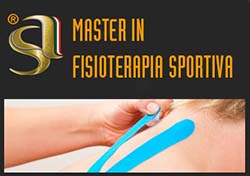Modalità di esecuzione e valutazioni dello step test e del test da sforzo
Sport and Anatomy Fascicolo 1, 2019, pagine: 13-19
DOI | @ Pisa University Press 2020
Pubblicato: 15 June 2020
L’intero articolo è disponibile
Riassunto
L’obiettivo del presente lavoro è la puntualizzazione delle varie fasi e delle misurazioni che devono essere fatte in ogni prova da sforzo, cercando di agevolare l’interpretazione dei risultati e rendere possibile una valutazione comparativa dei test provenienti da laboratori diversi. Considerando che l’infezione da SARSCoV-2 causa non solo la ben nota polmonite interstiziale ma può anche indurre danni importanti al miocardio, è necessario eseguire con la massima accuratezza, negli atleti che dovranno essere rivalutati per l’idoneità, l’esecuzione del test da sforzo (Step Test o test da sforzo al cicloergometro) e mai accontentarsi di un test sub-massimale. Pertanto, negli atleti che allo Step Test non raggiungono una frequenza cardiaca massima > 85% del valore teorico calcolato per l’età e il sesso, è necessario effettuare un test da sforzo massimale al cicloergometro o al treadmill e/o un Holter ECG delle 24 con seduta di allenamento e con modalità di registrazione a 12 derivazioni. In soggetti con età ≥ 35 anni, appartenenti al gruppo di atleti guariti dall’infezione da CoV-19, anche l’ECG da sforzo deve essere massimale ed esplorare l’intera riserva cardiaca. In atleti che non raggiungono una frequenza cardiaca massima > 85% del valore teorico calcolato per l’età e il sesso, è necessario effettuare un test da sforzo massimale al treadmill e/o un Holter ECG delle 24 con seduta di allenamento e con modalità di registrazione a 12 derivazioni al fine di definire con precisione la morfologia di un’eventuale extrasistolia ventricolare e conseguentemente il sito d’origine della stessa.
Parole chiave
Percorso di valutazione
Peer reviewed. Certificazione della qualità





